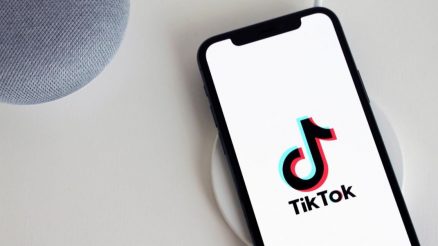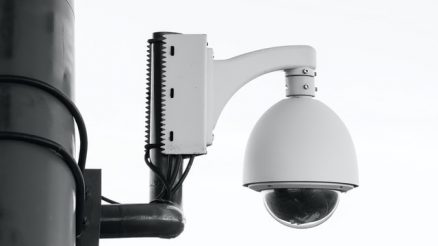Widgets offer iOS and Android users the ability to view an app or website without having to open or launch a site or application. Due to the design, users may simply view the widgets preview image on their mobile device home screen to see up-to-date information quickly and easily. From a business perspective, the widget serves as a valuable tool for providing target audiences with information about new content uploads, available products and services, and brand promotions directly on the end-users mobile device home screen.
Since the information on the widget is readily available for users to view, more businesses are searching for optimal solutions for developing widget apps for iOS and Android mobile device users. To learn more about the configuration and development of a widget for business brands, it is best to reach out to a local Los Angeles mobile app development agency like https://sunlightmedia.org. Ideally, the widget app will provide users the ability to view your brand’s products and services easily while improving overall user experience, user engagement levels, and overall business productivity and performance.
Table of Contents
What are App Widgets?
Also referred to as “mini-apps,” widget apps are simple, navigation, and user-friendly features made for different mobile device operating systems. Widgets may be used on smartphones, TVs, desktop computers, and smartwatches. Typically, users use widgets on their mobile devices to reference the time, daily weather forecasts, stock prices, note pads, and more.
However, widgets for mobile devices are becoming increasingly popular due to the design and ability to present data to the end-user efficiently. Businesses may significantly benefit from learning more about the numerous benefits of developing widgets, along with understanding the biggest shifts in events technology to better expand their brands. These widgets may be developed using coding and non-coding software and may be used for increasing brand value if used properly.
Common Widget Features
When users interact with app widgets, there are typically a set of common functions and features that make interacting and managing the widget easy for the end-user. Ideally, the widget should have a clear view, be easy to navigate, and manage on the home screen of a mobile device. Within the widget settings, users may have the option to manage themes, alert notifications, and choose how much information the widget presents when active. The widget should be accessible via the home screen, show live and real-time updates and alerts, and offer various screen space sizes for users to select from. Lastly, widgets commonly offer users the ability to quickly recall information, support background refreshes, and use minimal battery when in operation.
Top App Widget Development Systems
SwiftUI
SwiftUI is available on the iOS app Distribution stores and allows users and businesses to develop app widgets with varying capabilities. For development purposes, businesses may use Xcode and begin widget creation by working on the provided app templates within the program. Users with Xcode may choose which operating system to run their simulations on before launching the widget application. Choose between small, medium, and large widget layouts to apply for mobile devices. After the preliminary setup steps, users may edit the swift files and manage the data to suit the functionality of the widget app’s purpose.
Appbase.io
From within the Appbase.io dashboard, users may choose from a series of function tabs to edit and create personalized widgets. The dashboard includes development, analytics, insights, UI builder, access controls, and recommendation functions.
The recommendations tab allows businesses to build widgets for associated brand users that will provide updates on new content and news publications, brand promotions, and product recommendations from a live website or mobile application. Through the widget, an organization may showcase relevant brand recommendations to its customers as they browse various products, store items in their carts, and explore more available inventories after initial purchases of brand products. In this scenario, the widget may improve overall user experience, user engagement levels, and business productivity and performance.
By using the Appbase.io UI Builders framework, users may configure the basic information and widget parameters needed before the implementation of the widget app. For instance, users may modify the widget name, how the widget uses the data collected, how the widget shares the collected data, and how features and seasonal products populate on the widget. In more detail, Appbase.io users may add in the appropriate call to action, button styles, user interaction fields, and URL parameters from within the UI Builder dashboard.
Flutter Platform Widgets
Flutter platform widgets allow businesses to set up widgets for mobile devices with code-based programming. In particular, this particular system offers its users the ability to design widgets that appear differently depending on which Android or IOS device is in operation. In other words, the developed widget will render differently on various mobile operating systems and will showcase different widget styles for various mobile device users.
Within the program, users may configure the widget to run on different themes and apply functions from different widget libraries to suit the targeted mobile platform. These libraries consist of numerous widget templates and features for texts, buttons, navbars, progress indicators, modal sheets, page routes, dialogue actions, toggles, and app slide bars. The Flutter Platform Widgets software ensures that businesses provide widgets for mobile devices that appear and function natively to their corresponding platform.
Android Studio
Android Studio allows businesses to create android app widgets from one single location. From the dashboard, the developer may assign the correct name, placeholder image, and orientation of the widget to meet mobile device parameters. This dashboard also includes the necessary files for editing the widget for android app widgets such as layer files, activity folders, and programming functions. From within Android Studio, users may modify the styles of fonts, buttons, colors, and data previews to display clearly on the preferred android device.
Conclusion
In conclusion, widgets for mobile devices serve as useful and quick features users may interact with directly from the home screen of their device without needing to launch an application or access a URL into an online browser. Businesses that offer app widget versions for their target audiences enable their customers the ability to remain up-to-date on new brand content, products, and promotions while improving brand engagement, user experience, and business productivity. Depending on the enterprise, businesses may opt into various code and non-code-based programs to develop their app widgets and better promote their brand.
Bio
Jhonathon Badalof works at Sunlight Media LLC in Downtown Los Angeles, California. As a Project Manager, Jhon collaborates with clients on website and app design and development, marketing, and creative solutions for campaigns. In addition to Project Management, Jhon is a content writer who writes articles that rank well on Google and other social media platforms. His skill sets include social media marketing, eCommerce, brand development, programming, web design, and graphic design.



